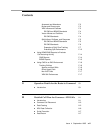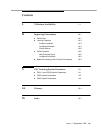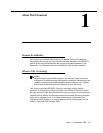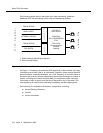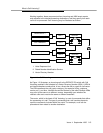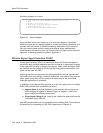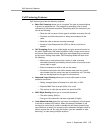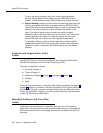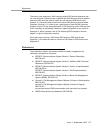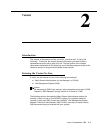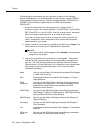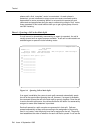
About This Document
1-6 Issue 4 September 1995
To use Look-Ahead Interflow, Basic Call Vectoring and Integrated
Services Digital Network-Primary Rate Interface (ISDN-PRI) must be
enabled. Private Network Access (PNA) software may also be required.
■ Adjunct Routing provides you with a means of evaluating calls before the
calls are processed. Specifically, this feature allows a DEFINITY PBX to
request instructions from an associated adjunct, which is a processor that
performs one or more tasks for another processor (the switch, in this
case). The adjunct makes a routing decision according to agent
availability and/or caller information sent by the switch, and it returns the
routing response to the switch. By using this feature, the call center
ensures that each call is delivered to the appropriate destination.
To use Adjunct Routing, Adjunct Switch Applications Interface (ASAI)
capabilities and Basic Call Vectoring must be enabled. Adjunct Routing
can also be used in conjunction with Call Prompting and Look-Ahead
Interflow.
Contents and Organization of the
Guide
The
DEFINITY Generic 3 Call Vectoring/Expert Agent Selection (EAS) Guide,
555-230-520 discusses all facets of Call Vectoring and EAS.
The guide is organized as follows:
■ Overview (Chapter 1)
■ Tutorial (Chapter 2)
■ Reference (Chapters 3 through 11, Appendices A through N)
■ Glossary
■ Index
The guide first concentrates on illustrating Call Vectoring principles (Chapters 1
through 9). Chapter 10 presents a thorough discussion of EAS, which builds on
Call Vectoring. Chapter 11 presents several Call Vectoring and EAS applications.
Finally, the appendices, Glossary, and Index provide information and references
to both Call Vectoring and EAS topics.
Intended Audience and Use of the
Guide
The guide is intended primarily for personnel who opt to use Call Vectoring
and/or EAS. You should use this guide as an information source for implementing
Call Vectoring and/or EAS. A knowledge of Automatic Call Distribution (ACD) is
assumed.



